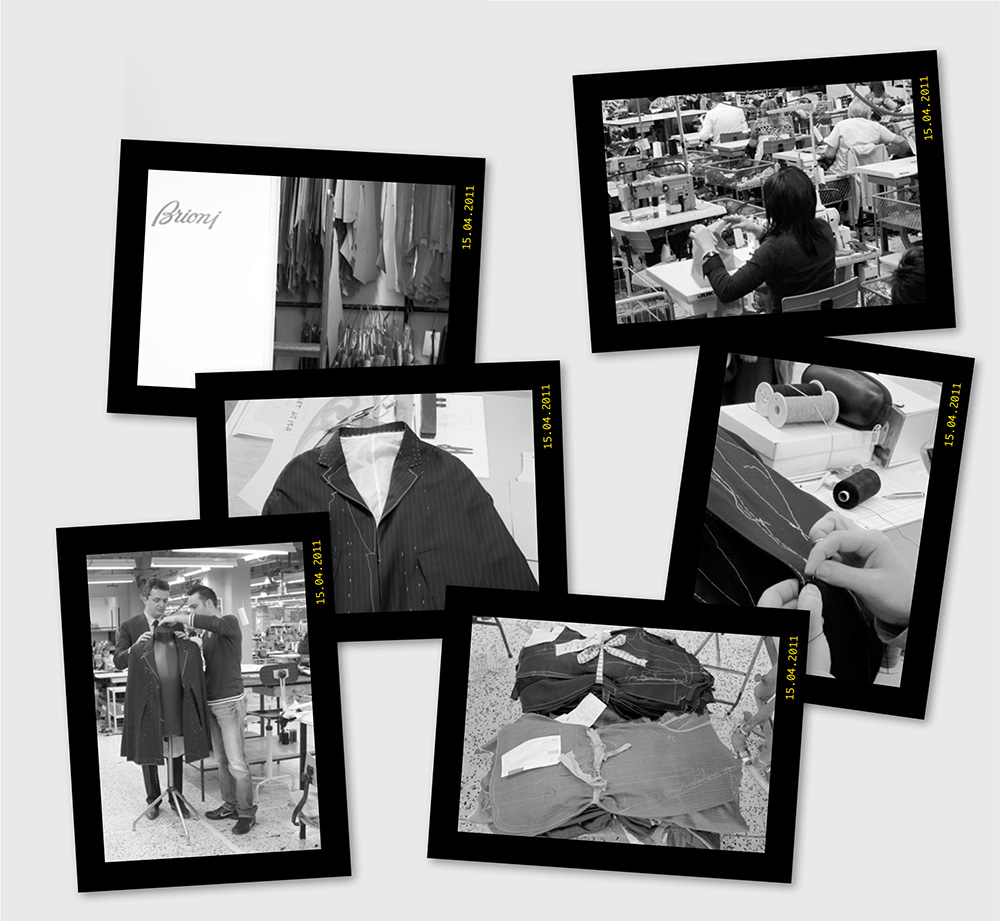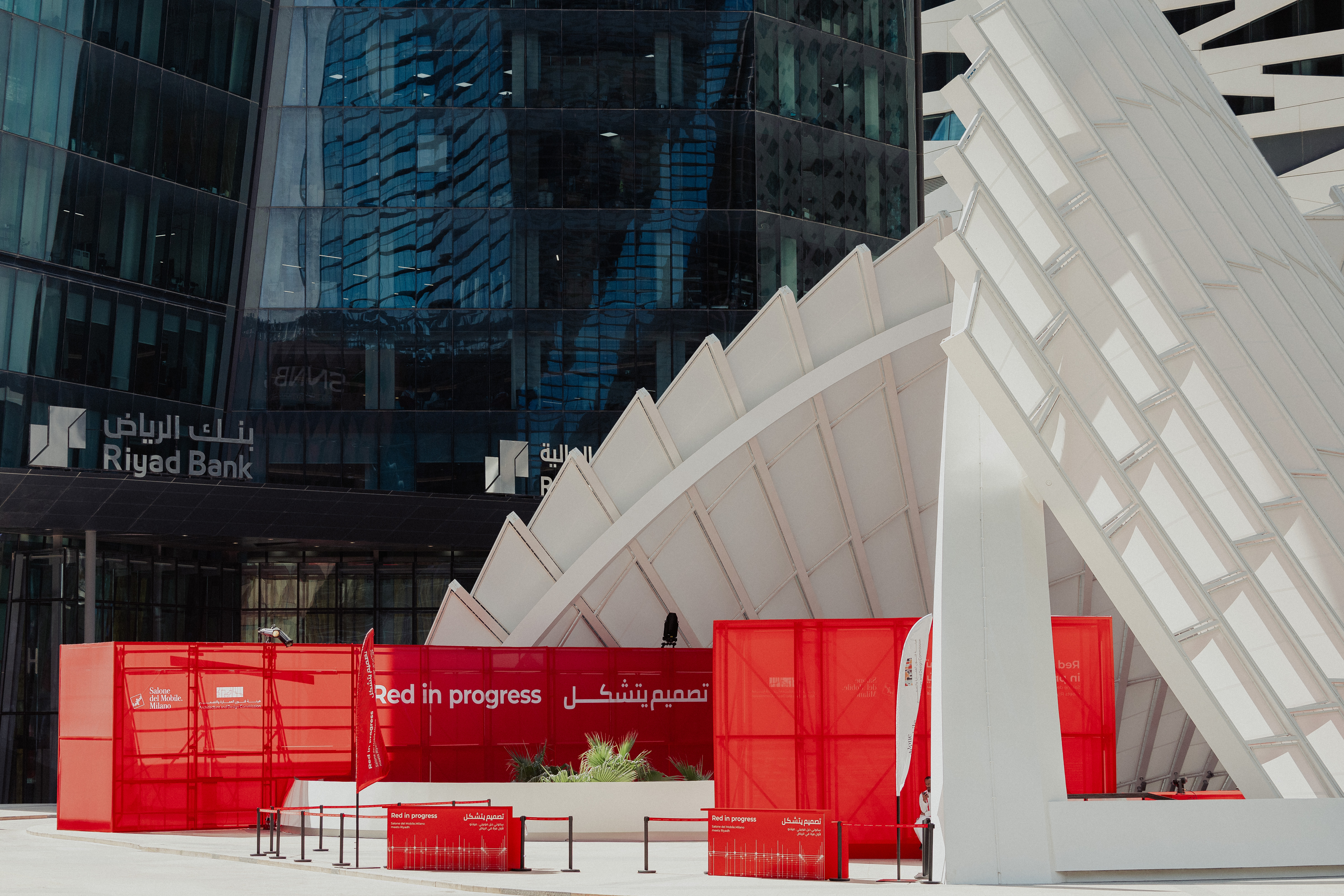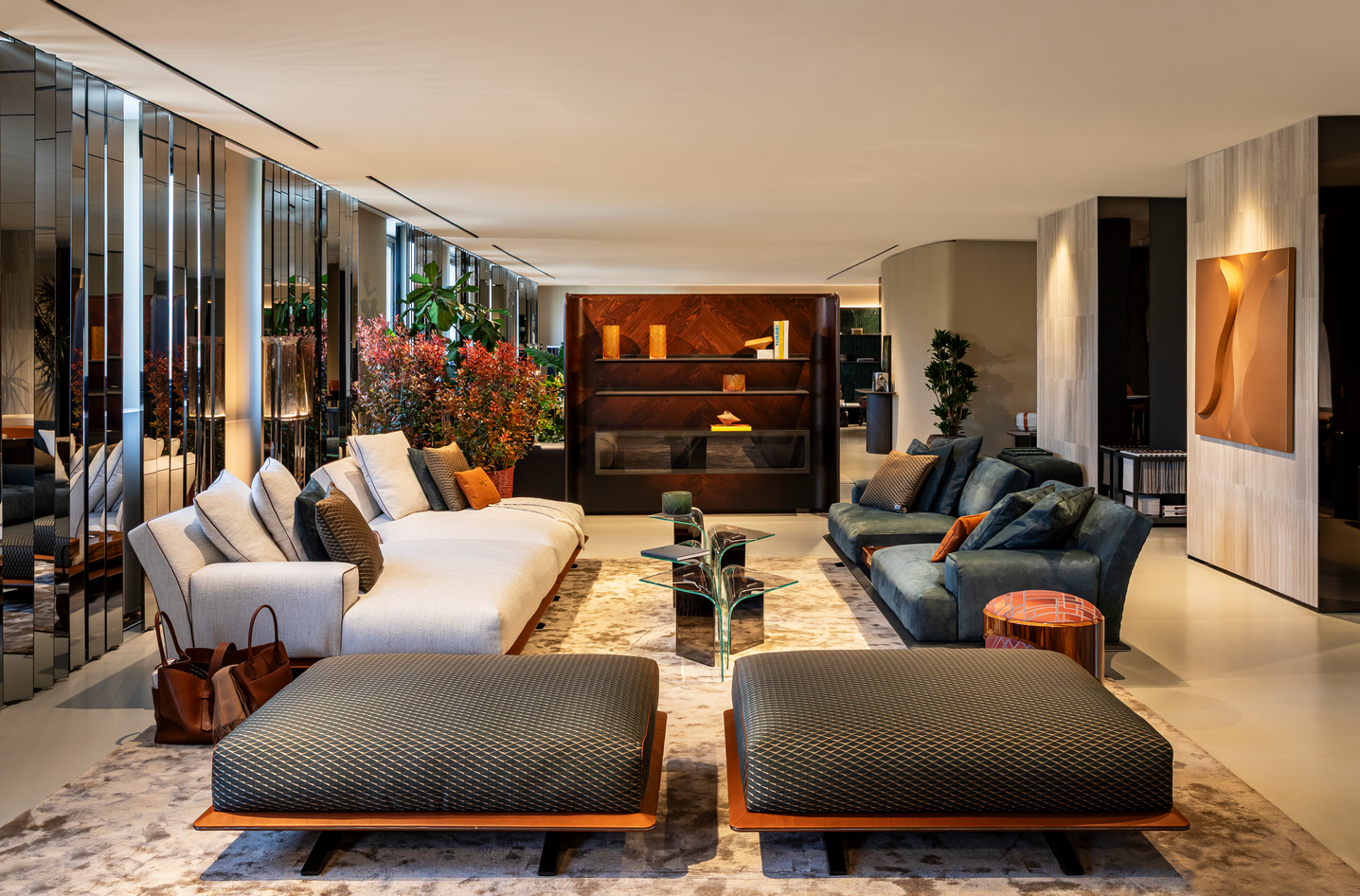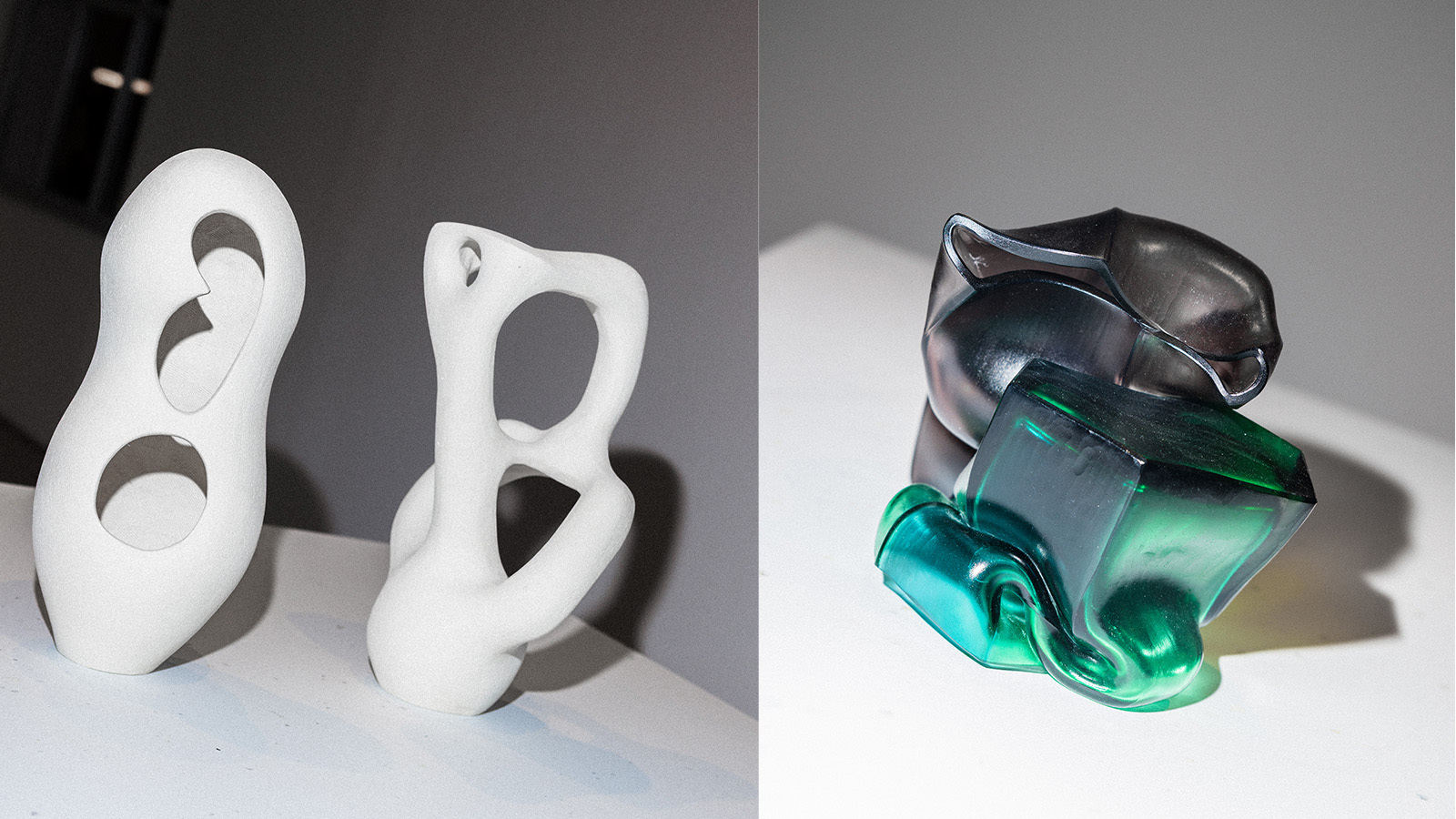The making of ‘Cape’ suit, by Konstantin Grcic and Brioni

Konstantin Grcic may be the pre-eminent, certainly the most prolific, industrial designer of the era. But what he is not – by his own admission – is a fashion designer. In fact, of all the premier-league designers, Grcic, synonymous with the engineered and re-engineered, might seem the most ill-suited to the swish and swagger and seasonal flimflam of the fashion world. Patricia Urquiola and Marcel Wanders maybe; Grcic, no way.
But when we approached Grcic to be part of this year’s Handmade project – and of course we had to – working with a tailor was one of the first ideas he threw at us. And immediately it started to make sense. Quite the quiet dandy on the side, Grcic, it turns out, has long had an interest in the soft engineering of the bespoke and made-to-measure suit – the complex mechanics of cut and padding, and structure and compensation.
‘I have been fascinated by tailoring for a long time. I had a girlfriend who was a tailor,’ Grcic explains. ‘I appreciate the beauty of working with fabrics, how they become three-dimensional, and also the beauty of cutting into a piece of fabric.’ Grcic knew enough about tailoring, and the skills required, to leave well alone, though. ‘It was one of those things that I thought was fascinating, but didn’t really want to do myself.’
However, when we threw the Handmade challenge at him, he thought it might finally be time to take it on. Initially, his idea was to come to London. ‘When we started talking about the project I thought about Savile Row,’ he says. But we thought it made far more sense to put Grcic together with Brioni, the standard bearer of bespoke Italian tailoring, and see if they could come up with a centerpiece for our Handmade exhibition in Milan.
Grcic was perhaps more familiar with the English tailoring tradition – essentially the evolutionary jump from uniform making and still about creating a sort of civilian armour – than the looser, more fluid and more fashionable swing of the Italian suit. ‘I didn’t really make the connection with Brioni at first,’ he admits. But as soon as we did it for him, it’s fair to say he was as excited by the prospect as one can imagine a designer of his standing and experience could be.

As photographed by Grcic, his ‘Cape’ suit was made by Brioni’s skilled master tailors at the brand’s Penne factory, under the supervision of master tailor Angelo Petrucci (bottom left).
Grcic’s MO has always been to understand the possible first, to look at how things are made, and then see if he can make them better, or at least make them in a different, perhaps better way. And so it was with the Brioni project.
Grcic found his way from Munich, where he is based, to Penne in the Abruzzo area of Italy to meet Angelo Petrucci, Brioni’s master tailor. Brioni was founded in 1945 when Nazareno Fonticoli, a tailor based in Penne, and his partner Gaetano Savini, opened the first Brioni tailor shop on via Barberini in Rome. But it is in Penne where Brioni’s suits are still made, where the company’s heart beats and where a Brioni tailoring school ensures there is always a new supply of master craftsmen to hand-make its suits.
‘Meeting Angelo was a crash course in that sort of tailoring,’ explains Grcic. ‘In the afternoon, after seeing all the making and the way they worked, he took my measurements. It is fascinating what information they use. Angelo is always observing, watching how you move, whether you move a lot, whether you make quite small, controlled movements, how much you stand still and what you do with your hands when you stand still.’
The pair, despite coming from very different traditions, developed an instant rapport. ‘We got on very well,’ says Petrucci. ‘Konstantin is an extraordinary person with respect to sensitivity, to being practical and to creativity. I was struck by his way of working – he considered everything just like a real “master tailor” and this is what struck me most. He immediately understood everything regarding the aesthetic level. Naturally, for the technical part, years of training are necessary’.
‘It was a really beautiful experience,’ enthuses Grcic. ‘Of course, your part of the process is making choices, and there are all these options. But someone like Angelo is not just an amazing tailor, he is also an amazing communicator, guiding you to make the right choices.’
But if Grcic was going to take on tailoring, it wasn’t going to be by reinventing the bespoke suit. He has too much respect for the years of training, the skills passed down from generation to generation, and the finely tuned intuition of the master tailor to walk in and try to un-seam it.
Looking through some of the archive material in Angelo’s office, Grcic came across an image of a young man wearing a cape and fell in love with the idea of a suit that reworked that idea and offered the wearer something like a personal environment, a two-piece suit with domestic powers of comfort.
Grcic returned to Munich and set to work on the sewing machine in his studio, mocking up a cape he could take back to Penne and let Petrucci and the team work their magic.
The challenge for Petrucci and Grcic was to produce a suit that from the outside was all about an elegant drape, about fluidity and movement, but that from the inside had the reassuring architecture of a made-to-measure suit, the security of a proper fit. ‘A good tailor really gives you a better body, makes you a better man. I really think there is a psychological aspect to it,’ says Grcic. ‘Tightening all those buttons on a military jacket makes you feel strong, make you feel like a superman.’
For Grcic, though, the appeal of the project was less about creating a new generation of caped superheroes or revolutionising contemporary menswear than getting to grips with a particular model of contemporary craftsmanship, a way of keeping hand-made relevant and practical on a commercial scale.
Brioni employs over 1,000 people at Penne, 400 of them tailors. And demand to enter the company’s tailoring school and join their ranks is intense. But what Brioni has at Penne is a factory. The stages of putting together a made-to-measure suit, and there are hundreds, are broken down and given to different craftsmen. It is, as Grcic describes it, a ‘human chain’. This is craftsmanship on an industrial scale, but also a company culture that is intimately tied to its original location and traditional skills.
And for Grcic, a designer who writes the story of production into each of his designs, this was a very good story.
As originally featured in the August 2011 issue of Wallpaper* (W*149)
INFORMATION
konstantin-grcic.com; brioni.com
Receive our daily digest of inspiration, escapism and design stories from around the world direct to your inbox.
-
 Volvo’s quest for safety has resulted in this new, ultra-legible in-car typeface, Volvo Centum
Volvo’s quest for safety has resulted in this new, ultra-legible in-car typeface, Volvo CentumDalton Maag designs a new sans serif typeface for the Swedish carmaker, Volvo Centum, building on the brand’s strong safety ethos
-
 We asked six creative leaders to tell us their design predictions for the year ahead
We asked six creative leaders to tell us their design predictions for the year aheadWhat will be the trends shaping the design world in 2026? Six creative leaders share their creative predictions for next year, alongside some wise advice: be present, connect, embrace AI
-
 10 watch and jewellery moments that dazzled us in 2025
10 watch and jewellery moments that dazzled us in 2025From unexpected watch collaborations to eclectic materials and offbeat designs, here are the watch and jewellery moments we enjoyed this year
-
 ‘Locally anchored and globally conversant’: Salone del Mobile debuts in Saudi Arabia
‘Locally anchored and globally conversant’: Salone del Mobile debuts in Saudi ArabiaSalone del Mobile lands in Riyadh (26-28 November 2025), bringing its creative and manufacturing know-how to one of the world’s fastest-growing markets and setting the stage for Italo-Saudi design relations
-
 Alcova 2026 locations include a Rationalist gem and an abandoned church
Alcova 2026 locations include a Rationalist gem and an abandoned churchAlcova returns for an 11th edition in 2026 (20-26 April), once again opening up two exclusive Milanese locations, the Baggio Military Hospital and Franco Albini's Villa Pestarini
-
 Salone del Mobile 2026 will embrace collectible design with Salone Raritas
Salone del Mobile 2026 will embrace collectible design with Salone RaritasSalone del Mobile has Salone Raritas, a new exhibition space at the fair (21-26 April 2026), curated by Annalisa Rosso and designed by Formafantasma
-
 O Milano! Design's epic annual spectacle in photos
O Milano! Design's epic annual spectacle in photosCall us biased, but we believe that Milan Design Week is, at this moment in time, the greatest show on earth
-
 ‘Romantic brutalism’ rethinks Polish craft
‘Romantic brutalism’ rethinks Polish craftAn exhibition in Warsaw gives local makers their due, looking inside the burgeoning world of Polish design
-
 Eight designers to know from Rossana Orlandi Gallery’s Milan Design Week 2025 exhibition
Eight designers to know from Rossana Orlandi Gallery’s Milan Design Week 2025 exhibitionWallpaper’s highlights from the mega-exhibition at Rossana Orlandi Gallery include some of the most compelling names in design today
-
 Bentley’s new home collections bring the ‘potency’ of its cars to Milan Design Week
Bentley’s new home collections bring the ‘potency’ of its cars to Milan Design WeekNew furniture, accessories and picnic pieces from Bentley Home take cues from the bold lines and smooth curves of Bentley Motors
-
 StoneX partners with Wallpaper* for material alchemy at Milan Design Week and beyond
StoneX partners with Wallpaper* for material alchemy at Milan Design Week and beyondThe natural stone purveyor teams up with Wallpaper* for a three-year partnership of material adventures, starting with an exhibition at Triennale di Milano